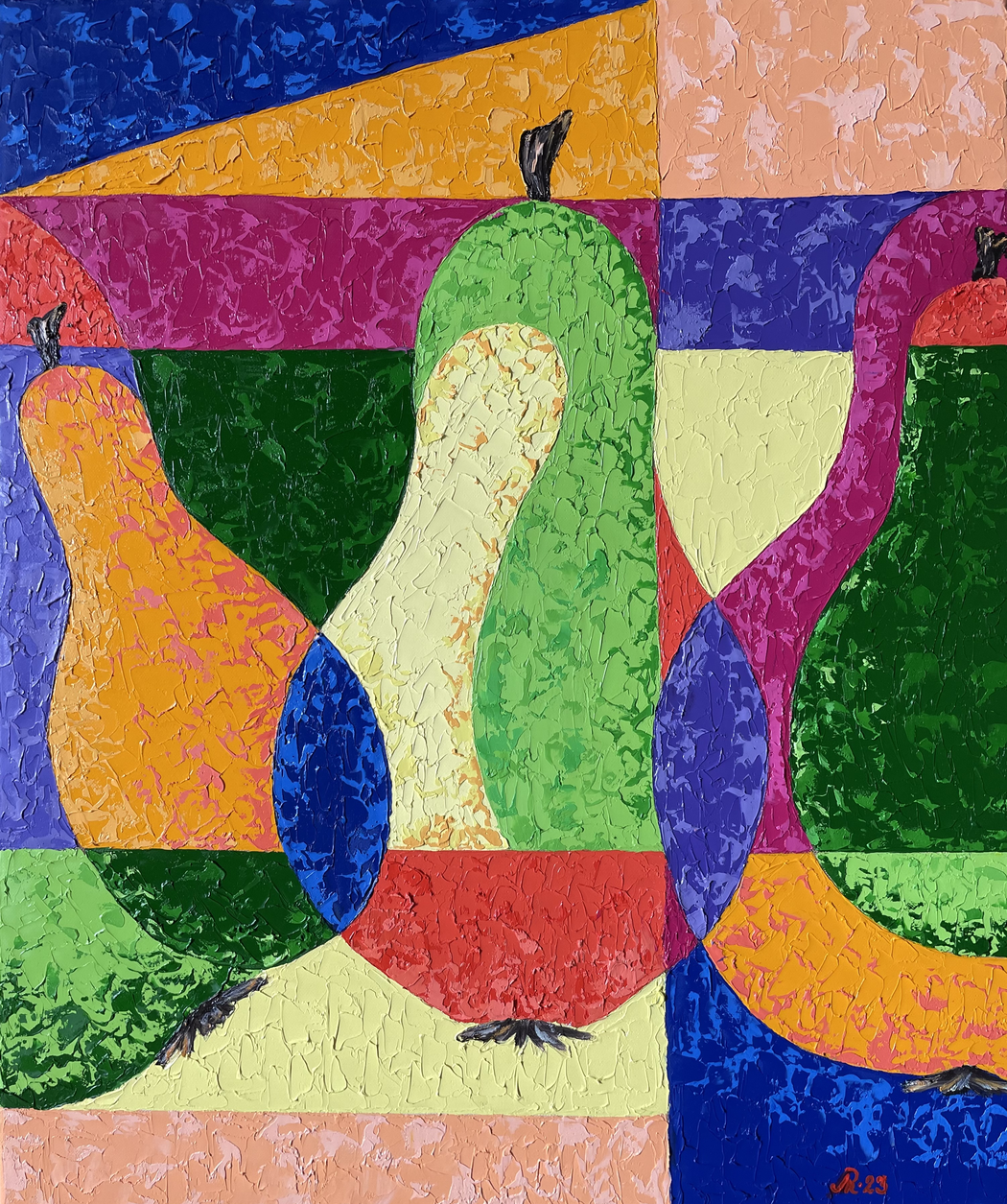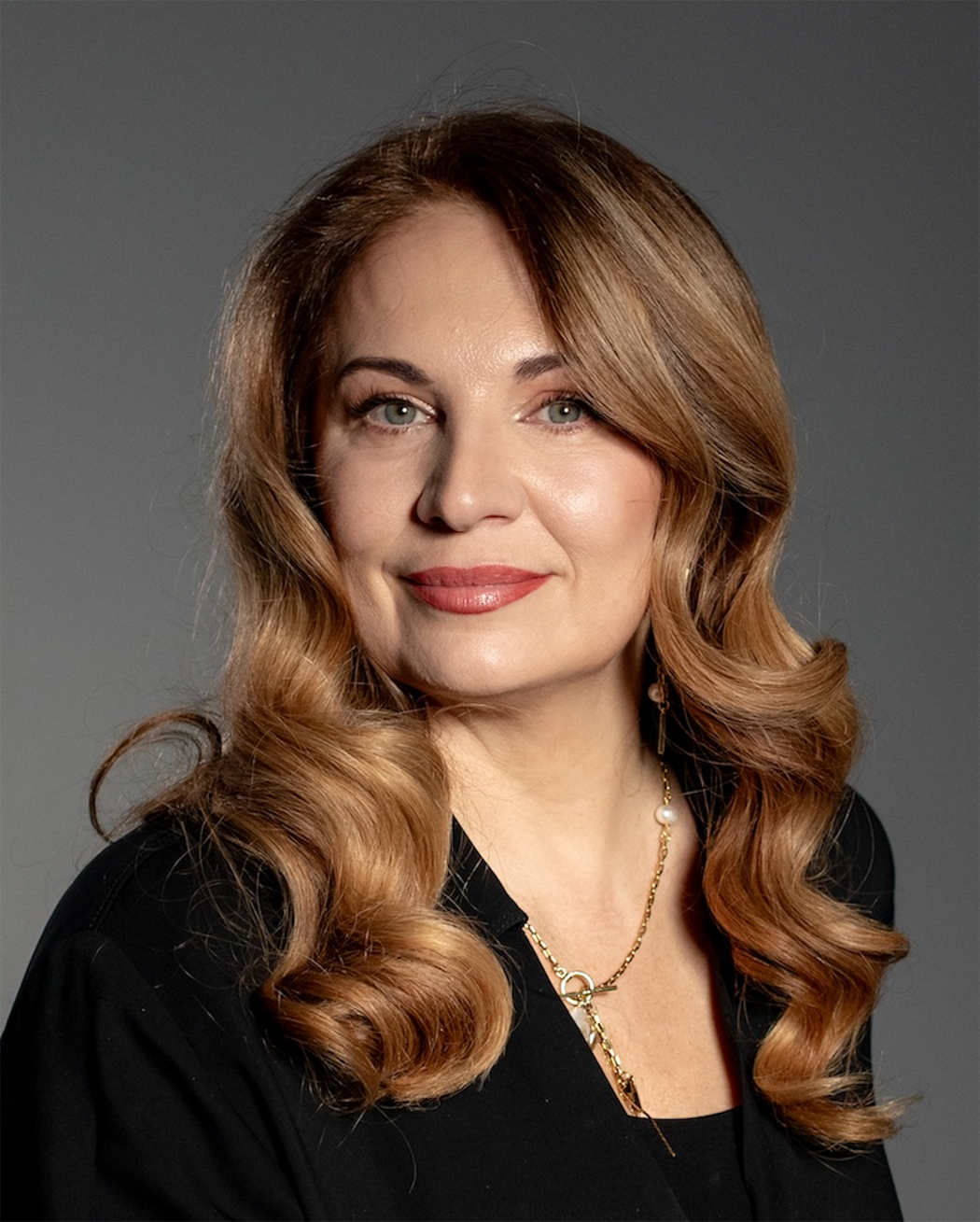Liudmyla Riabkova
Where do you live: Kyiv, Ukraine
Your education: Technical and economic education; later studied painting in a private art studio, which became the foundation of my artistic path.
Describe your art in three words: Vibrant · Textured · Alive
Your discipline: Contemporary oil painting with focus on color, texture, and impasto technique.
Website | Instagram
Your paintings often merge recognizable forms with abstract rhythm and geometry. How do you decide where representation ends and abstraction begins?
For me, it’s not a boundary but a smooth transition. Reality gradually dissolves into rhythm and color. I love when an image only suggests — when the viewer can imagine, sense, and complete it with their own perception.
Abstraction begins where form fades, and emotion and imagination emerge — creating a space the viewer enters on their own.
Color seems to be your main expressive tool. How do you approach building a color palette for a new work or series?
I start with a mood, which naturally reveals itself through color. From there, everything unfolds intuitively.
Color sets the rhythm for the entire composition.
The texture in your paintings plays an almost sculptural role. What draws you to the impasto technique, and how do you see it affecting the viewer’s emotional response?
I love when a painting “breathes” through its surface. Impasto is not just a brushstroke — it’s a touch that captures movement and emotion. Light glides over the texture, changing the mood of the painting depending on the angle of view.
It becomes a kind of living connection: the viewer can sense how the work was created — not only visually, but almost physically.
 Liudmyla Riabkova | Pears №4
Liudmyla Riabkova | Pears №4
In your “Pears” series, Cubist echoes meet vivid modern color. What inspired this combination of classical structure and contemporary energy?
I’ve always been fascinated by how classical forms and contemporary vision can coexist in harmony.
Cubism gave me structure and form — but I wanted to fill it with life, color, and light.
“Pears” is an attempt to animate geometry with emotion, to infuse form with inner movement and light.
I see this series as a conversation between tradition and modern sensibility — between the clarity of form and the living breath of color.
You’re part of several international art initiatives and recently exhibited in multiple countries. How do you see your art connecting with different cultural audiences?
Color, light, and emotion form a universal language — the one spoken by art itself. I’m always amazed by how people from different countries resonate with the same vibrations — peace, harmony, and light. Art unites us because it allows us to perceive one another through inner response rather than boundaries. This, to me, is cultural diplomacy, which I sincerely consider part of my mission.
You mention that you want the viewer to feel the painting through touch as well as sight. What kind of energy or emotion do you hope they perceive?
A living sensation.
Even when a painting is filled with contrasts or dramatic color, I want it to retain a sense of life — of touch and movement.
So that the viewer, while looking, can almost feel the roughness of a stroke — a tactile rhythm in which time itself seems to flow.
Can you share your process — from the first idea to the final layer of paint? Do you plan your compositions, or do they evolve intuitively?
I never make precise sketches. Everything begins with energy — color, rhythm, and light. Once I touch the canvas, the work develops naturally.
Sometimes it happens quickly; sometimes it needs silence and time.
The composition grows step by step — I respond to each stroke, allowing the work to evolve organically.


Leave a Reply